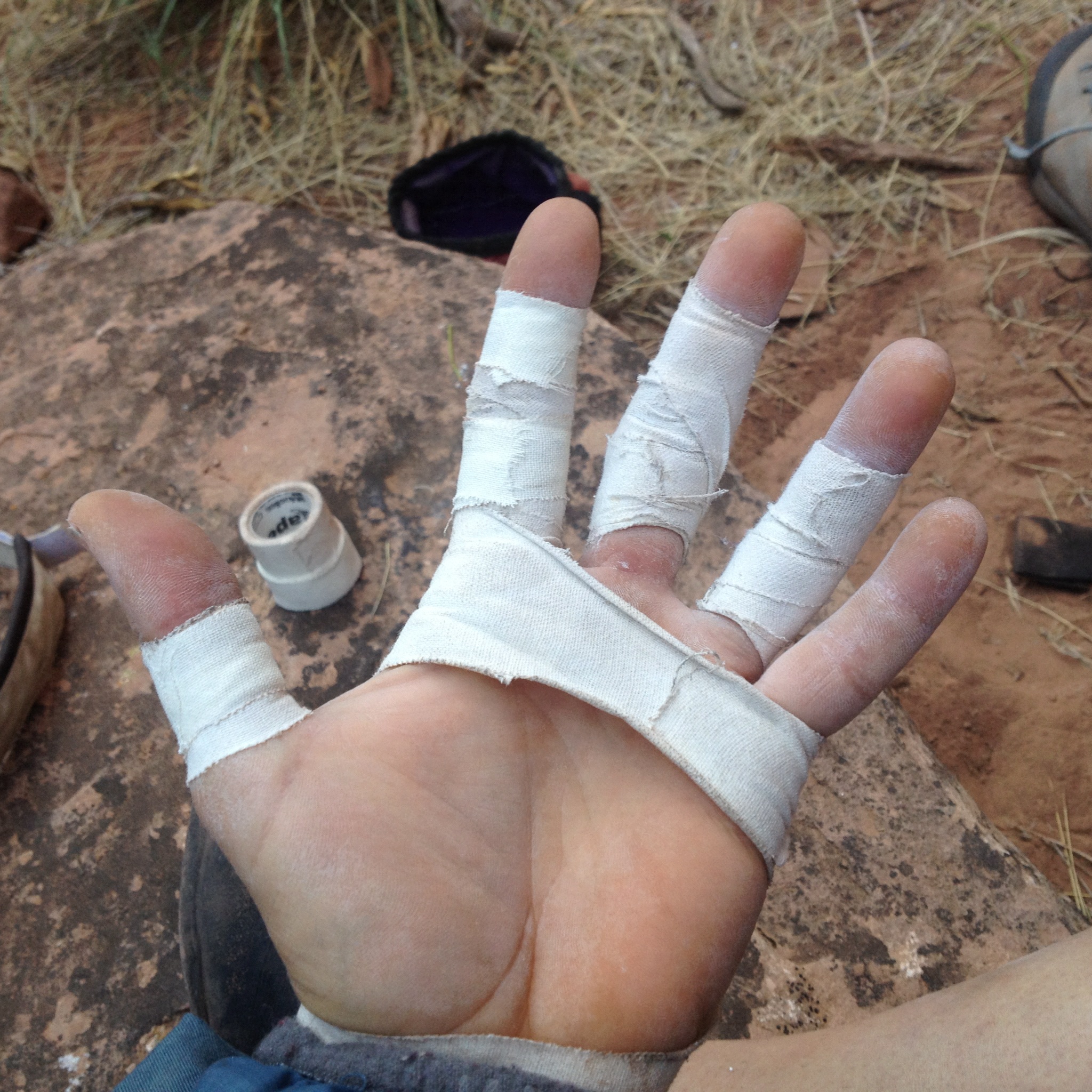How Do You Tape Your Fingers For Rock Climbing?
There are many methods to tape your fingers for rock climbing. Taping is an important way to protect your skin. It can also help prevent injury. Taping is effective for a variety of reasons, from skin protection to joint prevention. Here are some of the most common types. The best method is to use a thin strip of tape and overlap it several times. Then, anchor one end of the tape to a joint below the wound.
A common injury to your finger or tendon is a pulley. While your climbing partner can hold the rest of your fingers, a pulled finger can cause more damage than a torn or stretched tendon. If you don't want to risk further injury, try using immobilization tape or H-tape to support your injured finger while you're on the climb. Be sure to take it easy when you're resting your finger because pulling too hard can aggravate your injury.
If your finger is inflamed, rest from climbing for a couple of days or more. While your finger is in the healing process, it should be protected from direct pressure and rest. If you are unable to rest, tape your finger to prevent further damage. While the pain is gone, your finger should be strengthened with proper exercises to prevent pulley tears. A few days of crimping a tiny 5.12 hold may be enough to restore the strength of your fingers.
Finger taping for skin protection
Besides providing a measure of comfort, finger tapes can also help prevent internal injuries to the fingers. Since our skin is the only contact we have with the rock, climbing can be very stressful for it. Furthermore, the repeated stress placed on our arms, fingers, and knuckles can cause serious problems. Tape can prevent these problems and help us climb safely and comfortably. To get the most out of finger taping, read on!
To apply tape to a finger, begin by placing it over the end of the finger. The tape should extend all the way up the knuckle, but not too far down the fingertip itself. Make sure to avoid restricting finger movement, or the tape may become too tight and cause further damage. Taping the finger will prevent it from slipping, so be sure to do it right! And remember, don't wear the tape all the time!
If you're a beginner, start out by climbing in shorter sessions, as your skin will adjust more quickly. Taping will also help prolong your sessions, and prevent the formation of protective calluses. Many climbers apply tape after about 30 minutes or when their skin begins to sting. As a bonus, it helps keep the skin hydrated, making it less susceptible to injury. For a long-lasting effect, use tape that is made for rock climbing.
2. Finger taping for injury prevention
There are many benefits to tapering fingers for rock climbing injury prevention. Firstly, it provides support. While it looks gross, it will also help the tendon heal faster. Taping the finger will keep it from flapping. However, do not over-crimp, as this will irritate the pulley. Secondly, it will keep the finger package together. Tape over the loop, so that the finger stays still.
The best way to apply tape is by starting from the outer end of the finger and working your way to the knuckle or palm. Afterwards, pinch the end of the finger to check for excessive bleeding. If the fingertip is white, you don't have enough blood flow. You should also re-tape the finger. Try not to tape your finger if it bends. It may cause it to break or cause an injury.
Another good way to prevent finger injuries is to wear gloves that cover the entire hand, starting from the first knuckles. If your hands are thin, a single layer of climbing gloves is sufficient. For thicker padding, you can use two or three layers of gloves. However, this will restrict your movement and make your fingers too fat to climb thin cracks. This way, you can prevent any kind of tendon injuries from happening.
Methods of finger taping to use
A common mistake made by climbers is to use general prophylactic tape to prevent injuries. The body is a dynamic system and a certain amount of stress is necessary for the capsule-ligament apparatus. If the stimulus is reduced, the fingers cannot adapt to the stress. However, therapeutic taping can be beneficial for a climber after an injury to help them return to the sport faster. There are two types of taping: one is primarily intended for comfort and the other for protection.
There are several methods for applying tape to an injured finger. One of the most popular is using tape to repair a skin tear. First, the climber should stop any blood flow. After that, he should tear off a thin strip of tape and overlap it a few times. The other end of the tape should then be anchored to the joint directly below the wound. This method should be done for a few days before you begin to climb again.
Another method involves the application of exterior tape to the fingers. This tape prevents the tendons from bowstringing. Moreover, it protects the main pulleys from damage. When applied on the fingers, it also protects the tendons from inflammation and prevents the pulley from bowstringing. Further, it allows the climber to gradually acclimate his hands and fingers to higher loads.
Which method to use?
If you've ripped a finger while climbing, you're going to need to tape it up. The best way to do this is to cut a thin piece of tape, overlap it a few times, and anchor it to a joint below the wound. This way, it won't pull too tightly, making it easier to rip off. You can also consider broom-taping, which involves squeezing the tape very hard to keep it in place.
Before climbing, it's important to protect your fingers from blisters. Blisters form when the top layer of skin in your finger is exposed, exposing the underlying sensitive skin. Climbing with blisters on your fingers can cause bleeding or a burning sensation. Proper taping can prevent this from happening and make your climbing experience a lot more comfortable. If you want to learn how to tape your fingers for rock climbing, read on!
As a climber, you probably know that your fingers are one of the most important parts of your body. They can break and become damaged during a long session. Tape can protect your tendons and pulleys and provide structural stability. For beginners, the tape is more important for skin protection than joint and pulley protection. But even for experienced climbers, finger taping is an essential part of their gear.
Tape Recommendations – These Tapes Were Tested By
The following are our tape recommendations for rock climbing joints. These tapes are sticky and pliable. They will hold well in multi-pitch crack climbing, and they are inexpensive. If you want a more durable tape, we recommend Leukotape. Both tapes are equally sticky and pliable, but some are more flexible than others. Read on to learn more about each type.
While taping your joints is a good way to protect your body from injury, you should be careful not to use it while in pain. Tape can also serve as a visible reminder that you've injured your joint. Depending on your injury, you may have to wear tape only if your grip strength is compromised. If you have injured your finger, you should use a tape that provides visible protection while allowing your fingers to move freely.
When you use climbing tape, you should pay attention to the thickness. The thickness of climbing tape should be between two to three millimeters. The tape should be thick enough to withstand the stress on your joint. Otherwise, it may prevent you from getting the grip you need to climb safely. If you are worried about wearing a tape, be sure to check out the elasticity of the tape before you use it.
Conclusion
Performing H-taping is an effective way to support your injured finger. However, it does tend to loosen over time. So you should re-tape your fingers in between climbs and when the tape starts to come off. Many climbers have taken the advice of The Beatles and started tapering their fingers after finger injuries. Fortunately, they are plenty of methods to choose from. And remember to partner up with a friend and share the load.
First, there are three common types of tape. You can use them according to the type of injuries you have. The H method is the most popular one, while the crisscross method is common among older climbers. Depending on your level of skill, you can choose any of them. Generally, H-taping is a safe option for people who suffer from finger injuries. It will offer the most substantial support.
Using athletic tape is another way to tape your fingers. This kind is a better choice for securing your fingers than electrical tape, which tends to flex and is not suited for this purpose. Electrical tape tends to be too slippery and is not suitable for use on the skin. In addition, duct tape can cause your fingers to become sore and can be uncomfortable. If you're unsure of which type of tape is best, consult with a professional.


Comments
Post a Comment